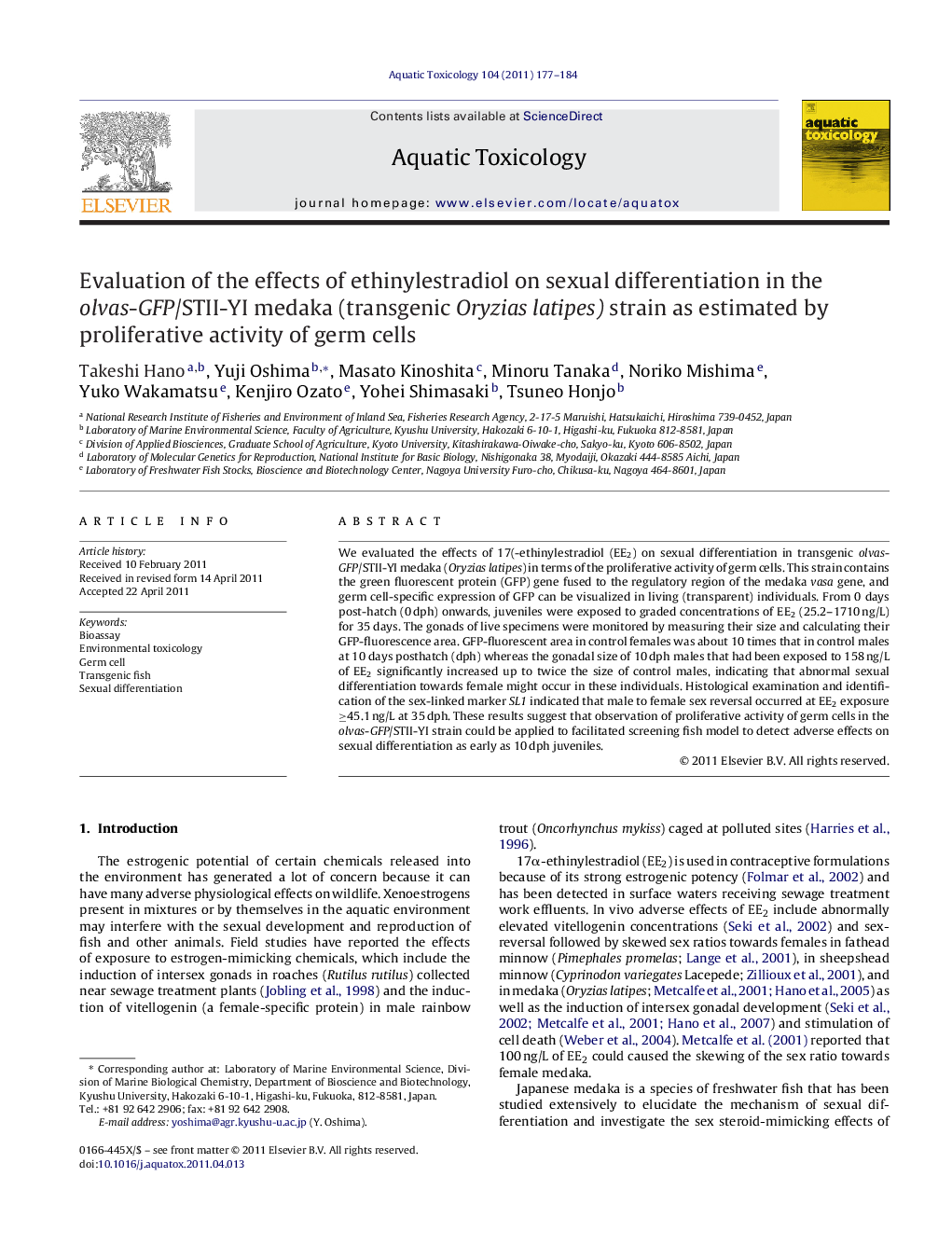| Article ID | Journal | Published Year | Pages | File Type |
|---|---|---|---|---|
| 4529992 | Aquatic Toxicology | 2011 | 8 Pages |
We evaluated the effects of 17(-ethinylestradiol (EE2) on sexual differentiation in transgenic olvas-GFP/STII-YI medaka (Oryzias latipes) in terms of the proliferative activity of germ cells. This strain contains the green fluorescent protein (GFP) gene fused to the regulatory region of the medaka vasa gene, and germ cell-specific expression of GFP can be visualized in living (transparent) individuals. From 0 days post-hatch (0 dph) onwards, juveniles were exposed to graded concentrations of EE2 (25.2–1710 ng/L) for 35 days. The gonads of live specimens were monitored by measuring their size and calculating their GFP-fluorescence area. GFP-fluorescent area in control females was about 10 times that in control males at 10 days posthatch (dph) whereas the gonadal size of 10 dph males that had been exposed to 158 ng/L of EE2 significantly increased up to twice the size of control males, indicating that abnormal sexual differentiation towards female might occur in these individuals. Histological examination and identification of the sex-linked marker SL1 indicated that male to female sex reversal occurred at EE2 exposure ≥45.1 ng/L at 35 dph. These results suggest that observation of proliferative activity of germ cells in the olvas-GFP/STII-YI strain could be applied to facilitated screening fish model to detect adverse effects on sexual differentiation as early as 10 dph juveniles.
